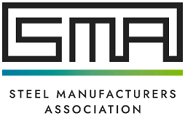Economy

SMA: Devil’s in the Details of U.S.-EU Tariff Talks
October 21, 2021
By Philip Bell, President, Steel Manufacturers Association
Editor’s note: Phil Bell and SMA are now periodic contributors to Steel Market Update. Look for Phil’s insights on steel and events in Washington in future issues of SMU.
The U.S. and EU want to resolve the Section 232 steel tariff issue by Nov. 1. This is an ambitious and important goal that both sides appear committed to achieve. It is essential that we reset our trade relationship with an important trading partner, however, it should not be done at any cost. Details are more important than timing. Homing in on the data, wording and mechanics that shape the contours of an agreement are what ultimately lead to solid execution, enforceability and true accomplishment over time.
![]()
While there is a growing consensus that the alternative scheme to the S232 steel tariffs may be a tariff rate quota (TRQ), the inner workings of a TRQ are not easy to implement. When it comes to the U.S. and EU doing more to promote decarbonization and reduce global excess steel capacity, both sides can be general in their pronouncements. When it comes to implementing a TRQ, it is about the details.
The most important of these details is determining what base period to use to ascertain how many tons of EU steel imports enter America tariff free. Basing this on current and future market conditions is the most reasonable approach. We should not use any period that created the need for the Section 232 response in the first place.
The years leading up to the S232 response represent a period of dumped and subsidized imports and market distorting behavior. In 2010, U.S. imports of steel from the EU totaled 3.1 million tons. However, between 2010 and 2015, U.S. steel imports from the EU increased by more than 1 million tons. In fact, steel imports from the EU exceeded 4 million tons per year in 2014, 2015, 2017 and 2018. (Source: U.S. International Trade Commission)
During this period, there was a series of trade cases in which the Commerce Department found that imports from EU countries violated U.S. antidumping and countervailing duty laws. These unfairly traded imports led to major job losses, and capacity utilization fell to unsustainable levels.
As a result of the S232 action, the U.S. industry is investing billions in modern, low-carbon-intensity production capacity, creating less demand for high CO2-emitting European imports. Since the Section 232 program was implemented, the industry has invested almost $16 billion in new, expanded or upgraded facilities. Citi Research anticipates that nearly 10 million tons of additional production capacity will come online between now and 2023. Any agreement that results in an import surge will jeopardize these important investments.
When it comes to the U.S.-EU S232 tariff negotiations, it is not only important to get it done, but to get it right.
Phil Bell is president of the Steel Manufacturers Association (SMA). SMA is the largest steel industry trade association in the United States and is the primary trade association representing American EAF steel producers. Accounting for over 70% of domestic steelmaking production, EAF producers are the most sustainable steelmakers in the world. By using an innovative, 21st century production process that is less energy-intensive, domestic steelmakers have up to 75% lower carbon emissions than traditional steelmakers. SMA’s 24 producer members have operations in 35 states. For more information check out our website at www.steelnet.org or our Facebook page.
Latest in Economy

Steel groups welcome passage of budget bill
Steel trade groups praised the passage of the Big Beautiful Bill (BBB) in Congress on Thursday.

Industry groups praise Senate for passing tax and budget bill
The Steel Manufacturers Association and the American Iron and Steel Institute applauded the tax provisions included in the Senate's tax and budget reconciliation bill.

Chicago PMI dips 0.1 points in June
The Chicago Purchasing Managers Index (PMI) slipped 0.1 points to 40.4 points, in June.

Multi-family pullback drives housing starts to 5-year low in May
US housing starts tumbled in May to a five-year low, according to figures recently released by the US Census Bureau.

Architecture firms still struggling, ABI data shows
Architecture firms reported a modest improvement in billings through May, yet business conditions remained soft, according to the latest Architecture Billings Index (ABI) release from the American Institute of Architects (AIA) and Deltek.
